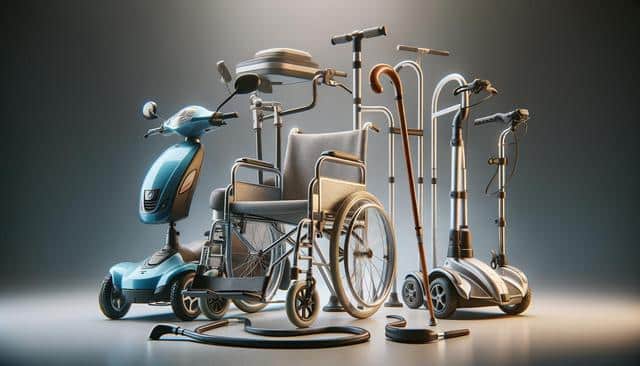
Top Mobility Devices for Seniors: A Practical Guide to Everyday Freedom
Understanding Mobility Needs in Later Life
As individuals age, maintaining independence becomes increasingly important. Mobility devices can play a key role in supporting seniors as they move through daily life. Conditions such as arthritis, balance issues, or recovery from surgery often make walking or standing for long periods difficult. Selecting the right mobility aid begins with understanding the user’s specific needs, environment, and physical condition. Family members and caregivers should also be involved in the decision-making process to ensure the chosen device offers both safety and comfort.
Mobility devices can range from simple walking aids to motorized equipment. Each type has unique features designed to meet different levels of mobility limitation. For instance, someone who only needs occasional support might benefit from a cane, while someone who requires full-time mobility assistance may need a powered scooter. Consulting with a healthcare professional for a mobility assessment is a helpful first step in determining the most suitable option.
Walkers and Rollators: Reliable Everyday Support
Walkers and rollators remain among the most commonly used mobility aids for seniors. They provide excellent support for those who are still able to walk but need assistance with balance or endurance.
There are several types of walkers to consider:
- Standard Walkers: These have four non-wheeled legs and offer solid support for individuals who need help with balance.
- Two-Wheeled Walkers: Easier to maneuver, these help users walk more smoothly while still offering stability.
- Rollators: Equipped with three or four wheels, brakes, and a seat, rollators are ideal for those who want to rest during walks and carry personal items.
When choosing among these, weight capacity, handle height, and portability should be considered. Many rollators come with storage pouches or baskets, allowing seniors to carry daily essentials conveniently. These features make walkers and rollators practical for both indoor and outdoor use.
Mobility Scooters: Enhanced Independence for Longer Distances
For seniors who struggle with walking long distances but still want to maintain an active lifestyle, mobility scooters offer a valuable solution. These battery-powered devices are designed for ease of use, often with adjustable seats, intuitive controls, and ample legroom.
Mobility scooters come in various formats:
- Travel Scooters: Lightweight and compact, these are easy to disassemble and transport in a car.
- Mid-Size Scooters: Offer a balance of comfort and portability, suitable for both indoor and outdoor use.
- Heavy-Duty Scooters: Built for rugged terrain and higher weight capacities, offering durability and longer battery life.
Most scooters include features like adjustable tillers, padded seats, and storage options. They are especially useful for shopping trips, outdoor activities, or navigating large spaces like malls or parks. While they require more space and maintenance than walkers, the added autonomy they provide can greatly enhance quality of life.
Canes and Walking Sticks: Simple Solutions for Light Support
For those who need minimal assistance, canes and walking sticks are easy-to-use tools that offer stability without bulk. They are particularly beneficial for individuals recovering from minor injuries or those experiencing occasional imbalance.
Key options include:
- Single-Point Canes: Ideal for users who need slight balance support on one side of the body.
- Quad Canes: Provide more stability with a four-legged base and are suitable for those with moderately reduced mobility.
Modern canes often feature ergonomic handles, adjustable heights, and anti-slip rubber tips to enhance safety. Some even come with foldable designs, making them easy to carry and store. Because of their lightweight form, canes are perfect for use in tight spaces or crowded environments where larger mobility aids might be impractical.
Additional Mobility Aids to Consider
Beyond the typical walkers, scooters, and canes, there are other mobility-enhancing devices that can make everyday life easier for seniors. These aids often complement primary mobility tools and can be just as essential for maintaining independence.
Other helpful devices include:
- Transfer Chairs: Lightweight wheelchairs designed for short-distance transport, usually with assistance.
- Stair Lifts: Mechanized chairs that move along stair rails, ideal for multi-level homes.
- Lift Chairs: Recliners with powered lifting mechanisms to assist seniors in sitting or standing.
- Grab Bars and Handrails: Installed in bathrooms and hallways to improve safety and reduce fall risk.
These tools, combined with core mobility devices, create a supportive environment that helps reduce the risk of falls and injuries. They also promote confidence, encouraging seniors to stay active and engaged in daily routines. Always evaluate the home environment when selecting these aids to ensure they fit seamlessly into the user’s lifestyle.
Conclusion: Choosing the Right Mobility Aid with Confidence
Mobility devices offer more than just physical support—they provide freedom, confidence, and peace of mind. For seniors and their families, selecting the right tool is an important step toward safer, more independent living. Whether it’s a walker for daily errands, a scooter for longer outings, or a cane for light support, each device plays a valuable role in enhancing mobility.
Before making a decision, it’s important to consult a healthcare provider and consider the user’s specific needs, lifestyle, and environment. With the right choice, seniors can continue to enjoy their routines with greater ease and less worry. Investing in mobility aids is not just about movement—it’s about improving quality of life and fostering a sense of independence that every senior deserves.


